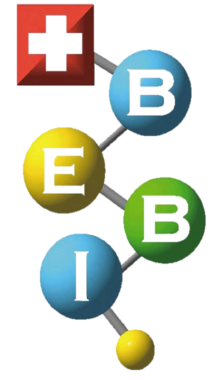研究主題:透過機器學習建立阿茲海默症臨床分類模型
撰寫:學生曾子洋
隨著全球人口結構改變,高齡化已成為當今全球已開發國家面臨的一大挑戰,對於健康保險、社會福利政策乃至於經濟數據與文化價值等方面皆產生重大影響。其中隨年齡增長,人體的器官與組織也會隨之老化。以神經系統為例,可能會導致神經元的衰退與萎縮,神經傳導速度減慢,神經細胞再生能力下降等問題,從而增加神經疾病發生的風險,如帕金森氏症與阿茲海默症(Alzheimer’s disease, AD)等。為因應高齡化社會導致之神經疾病相關挑戰,及早發現神經疾病並且進行對應的治療以控制症狀乃十分重要。而邱教授作為神經科醫師,同時也致力於失智症的相關研究,他也帶領研究團隊收集臨床資料並於去年針對阿茲海默症的分類發表相關研究成果 [1]。
阿茲海默症是一種慢性神經退化性疾病,是失智症中常見的一種,現仍無根治的方法。其特徵為大腦中部分神經細胞與神經元之間的連結異常從而影響大腦記憶功能。症狀包含輕微短期記憶喪失,認知障礙,甚至可能失去日常生活自理能力。阿茲海默症相關的神經疾病包含自覺認知衰退(subjective cognitive decline, SCD)與輕度認知障礙(mild cognitive impairment, MCI)。SCD是指沒有客觀認知障礙的前提下,患者自覺記憶力或認知能力下降。而MCI 則是一種介於正常老化與阿茲海默症間的狀態,常被視為阿茲海默症的臨床前期。此外相關研究表明,患有SCD與MCI的病人有較高罹患阿茲海默症的風險 [2]。為了早期發現並提供阿茲海默症的治療,邱教授與其研究團隊開發一機器學習模型以對潛在病患進行分類,判斷其屬主觀認知衰退、輕度認知障礙或阿茲海默症。
邱教授收集各式臨床數據包含血液樣本與腦部影像,並篩選十二種特徵,作為後續機器學習模型的輸入。十二種特徵包括MMSE(Mini-mental state examination)評分、年齡、左右前葉皮質厚度、血漿中類澱粉蛋白(Amyloid β, Aβ)、tau 蛋白含量與海馬迴體積等。並使用隨機森林(Random forest, RF)與支持向量機(Support vector machine, SVM)兩種機器學習模型。透過計算接收者操作特徵曲線下面積(Area under receiver operating characteristics curve, AUROC)可發現該模型不論是在分別是否罹患相關疾病(MCI與AD vs. 控制組),抑或是不同症狀兩兩分類(SCD、MCI與AD)的表現,兩模型在使用所選之十二種特徵的分類表現皆相當良好,其AUROC分數皆高於0.85且最高有達到0.9的分類效果,說明使用臨床上易於獲得的十二種特徵,並結合機器學習模型可以有效的區分阿茲海默症與其他相關症狀如MCI 與SCD。綜合以上,邱教授與其研究團隊透過臨床數據的搜集與篩選,並結合機器學習的法,提出一良好的分類模型,以協助臨床上的診斷,使患者可以早期接受預防性治療以延緩疾病症狀的惡化。
Research Topic: Developing a machine learning model for Alzheimer’s disease classification
Due to the change of global population structure, aging society has become a major challenge of developed countries around the world nowadays. It has brought significant impact on not only health insurance and social welfare policies but economic growth and cultural values. With age, organs and tissues also age accordingly. Take nervous system as example, this will lead to neuronal decline and atrophy, slowed nerve conduction velocity, decreased neural regeneration ability, and increased risk of neurodegenerative diseases such as Parkinson’s disease and Alzheimer’s disease(AD). To address the challenges of neurodegenerative diseases caused by an aging society, it is important to detect and treat them early to control symptoms. Professor Chiu, as a neurologist who is also dedicated to research on dementia, leads a research team to collect clinical data and published relevant research results on the classification of Alzheimer’s disease last year [1].
Alzheimer’s disease is a chronic neurodegenerative disorder, one of the common types of dementia and there is still no cure for it currently. The characteristics of AD is abnormal connections
between some nerve cells and neurons in the brain, which affects the memory function. Symptoms of AD include mild short-term memory loss, cognitive impairment and even loss of the ability to
perform daily activities. There are two neurological diseases, subjective cognitive decline (SCD) and mild cognitive impairment (MCI), related to Alzheimer’s disease. SCD refers to a decline in memory of cognitive abilities in patients without objective cognitive impairment. On the other hand, MCI is a state between normal aging and Alzheimer’s disease and is often considered as a
preclinical stage of Alzheimer’s disease. Additionally, previous studies have shown that patients with SCD and MCI have a higher risk of developing Alzheimer’s disease [2]. To detect and provide early treatment for Alzheimer’s disease, Prof. Chiu and his research team developed a machine learning model to classify patients into normal, SCD, MCI or Alzheimer’s disease.
Professor Chiu collected various clinical data including blood samples and brain imaging. Twelve features are selected as inputs for the subsequent machine learning model including MMSE (Minimental state examination) score, age, cortical thickness of the left and right frontal lobes, plasma amyloid β (Αβ), tau protein content, and hippocampal volume. Two machine learning models, random forest (RF) and support vector machine (SVM), were used in this study to classify the patients. By calculating the area under receiver operating characteristics curve (AUROC), it was found that both models performed well in classifying whether there was related disease (MCI and AD vs. control group) and in two-class classification of different symptoms (SCD, MCI, and AD) using the selected twelve features. The AUROC scores were all higher than 0.85, and the highest classification effect reached 0.9, indicating that using the twelve clinically easily obtainable features combined with machine learning models can effectively distinguish Alzheimer’s disease from other related symptoms such as MCI and SCD. In summary, Professor Chiu and his research team proposed a good machine learning classification model by collecting and selecting data to assist clinical diagnosis. Additionally, using the model to distinguish patients state can let patients receive preventive treatment earlier to delay the deterioration of disease symptoms.
[1] Chiu, S. I., Fan, L. Y., Lin, C. H., Chen, T. F., Lim, W. S., Jang, J. R., & Chiu, M. J. (2022). Machine Learning-Based Classification of Subjective Cognitive Decline, Mild CognitiveImpairment, and Alzheimer’s Dementia Using Neuroimage and Plasma Biomarkers. ACS chemical neuroscience, 13(23), 3263–3270. https://doi.org/10.1021/acschemneuro.2c00255
[2] Abner, E. L., Kryscio, R. J., Caban-Holt, A. M., & Schmitt, F. A. (2015). Baseline subjective memory complaints associate with increased risk of incident dementia: the PREADVISE trial. The
journal of prevention of Alzheimer’s disease, 2(1), 11–16. https://doi.org/10.14283/jpad.2015.37
